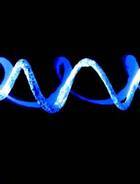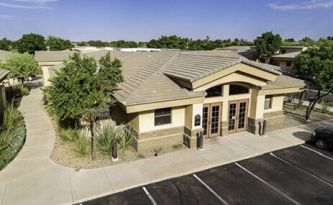PGD/PGS: 23 Chromosome Microarray Advantages
Published: 12/11/2015
POTENTIAL ADVANTAGES OF 23-CHROMOSOME MICROARRAY OVER TRADITIONAL FISH
PGD/PGS is actually a number of procedures, that combined, can determine an embryo’s genetic makeup while at the 8-cell to blastocyst stage. This information allows for important decision making before embryo transfer so that abnormal embryos, although they may be perfectly looking blastocysts that may or may not become ongoing intrauterine pregnancies, are not transferred. In this way, later decisions which are morally and ethically difficult (whether or not to terminate a Down's pregnancy becomes necessary when a genetically abnormal pregnancy is detected by traditional testing like Amniocentesis or Chorionic Villus Sampling (CVS)) are eliminated.
The more traditional technique of performing PGS employs Fluorescent In-Situ Hybridization (FISH).

The limitation of this particular technology was that it wasn't possible to test for all 24 chromosomes due to technical limitations. At first, only 5 chromosomes could be tested. With time, this was increased to 7, then 9, and ultimately 12. Even though only half of the chromosomes from a biopsied embryo could be tested (at best), several interesting findings emerged.
First, in women over 40, 90% of the embryos biopsied were found to be genetically abnormal. This finding lent support to the assumptions regarding the cause of the decrease in fertility rate and the increase in miscarriage and genetic abnormality rates of older women. Second, it was also found that morphological criteria currently used for embryo quality assessment might, in some cases, be misleading.
In other words, some of the embryos that appeared perfect in form were found to be genetically abnormal, while some very unattractive embryos were, in fact, normal. Yet the inability of FISH to provide complete genetic information for each embryo biopsied limited its effectiveness.
Since aneuploidy (chromosomal abnormalities) can affect any chromosome, it would be beneficial to expand PGS to include a screening of all 23 pairs of chromosomes. In fact, several research studies have shown that performing PGS with FISH techniques on day 3 embryos does not improve outcomes. Analysis of the entire chromosome complement of the embryo or oocyte, combined with further improvements in technology, may further increase the likelihood of implantation and decrease the chance of miscarriage for patients, and potentially decrease the number of embryos necessary for transfer.
It has now been 20 years since the procedure involving embryo biopsy and subsequent genetic testing has been available. Recently, newer technology has emerged that appears much more promising in its ability to deliver complete genetic (all the embryo's chromosomes) information. This technique is referred to as 23-chromosome microarray.
In contrast to FISH, microarray can provide information about all 24 chromosomes (22 pairs plus X and Y) from a single cell removed from a 3 day or day 5-6 embryo. Arizona Center for Fertility Studies believes that 23-chromosome-microarray should replace FISH for this reason, and hopefully, will actually be able to improve the efficiency of In-Vitro Fertilization (IVF) while limiting the occurrence of miscarriages.
This has tremendous implications for the future of ART. In the same way that ICSI was first performed in only a few fertility clinics worldwide and has now become routine in nearly every ART laboratory, Arizona Center for Fertility Studies strongly believes that embryo biopsy and PGD/PGS by 23-chromosome microarray may become routine in the next few years.
Arizona Center for Fertility Studies is convinced this is one of the most exciting developments in recent years in the field of reproductive medicine. This could mean that if a particular woman’s embryos were all found to be chromosomally abnormal, she would choose not to do an embryo transfer, and would have powerful objective information that could lead her to decide on using donor eggs, thus sparing the expense and disappointment of repeated IVF failures. It would also allow physicians to transfer only normal embryos, which would maximize the chances of a successful outcome irrespective of age.











